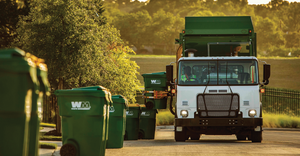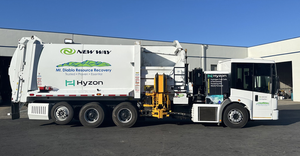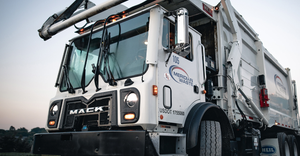Congress Introduces Legislation to Address Driver Shortage
The DRIVE-Safe Act will help expand the trucking candidate pool and modernize safety training.
Bipartisan lawmakers in the Senate and House introduced legislation to address the critical shortage of truck drivers affecting the movement and cost of the nation’s commerce. The DRIVE-Safe Act modernizes federal law to empower the trucking industry to fill these gaps with a qualified, highly trained emerging workforce. The measure is cosponsored by Senators Todd Young, R-Ind.; Jon Tester, D-Mont.; Tom Cotton, R-Ark.; Angus King, I-Maine; Jim Inhofe, R-Okla.; Joe Manchin, D-W.Va.; and Jerry Moran, R-Kan.; and Representatives Trey Hollingsworth, R-Ind.; Jim Cooper, D-Tenn.; Henry Cuellar, D-Texas; Al Green, D-Texas; and Sheila Jackson Lee, D-Texas.
The DRIVE-Safe Act has two prongs: It removes antiquated age restrictions on interstate transportation by licensed commercial drivers and strengthens safety training standards across the industry. Young adults become eligible to seek commercial driver’s licenses at age 18 in most states; however, federal law currently prohibits these commercially licensed adults from driving across state lines before age 21. This outdated prohibition bars the trucking industry from fully utilizing their complete workforce at a time when the country is facing a massive driver shortage and growing demand for freight transportation—estimates show trucking companies will need nearly 900,000 additional drivers over the next decade. The growing shortage is affecting the transportation and cost of goods for all consumers, as plants lack timely transportation for manufactured products, shipping is delayed and current drivers are strained.
“Hoosiers know Indiana as the Crossroads of America thanks to our strong infrastructure network and the numerous logistics providers that call Indiana home. We understand more than anyone the need to develop a responsible pathway to safely train more drivers,” said Young in a statement. “This apprenticeship program will address the driver shortage, create new career opportunities for young Hoosiers and substantially raise training standards to ensure safety on the roads.”
The driver shortage is particularly straining on the foodservice distribution industry, which delivers hundreds of thousands of perishable products each day. The federal age restriction on interstate transportation impacts places like the D.C.-Virginia-Maryland metro area, where a licensed foodservice distribution driver is prohibited from making a 5-mile delivery from Arlington to D.C. yet may drive 200 miles to Virginia Beach.
“Providing this workforce development opportunity for young drivers will lead to more comprehensive training, expanded career options and access to higher paying jobs,” said Tester in a statement. “This bipartisan bill will also provide a big boost to Montana communities that rely almost exclusively on trucks to move goods in and out of the state.”
“Indiana is the ‘Crossroads of America’ and a national hub of transportation and logistics that keeps our economy going,” said Hollingsworth in a statement. “The current driver shortage puts our dynamic economy at risk and closes off high-paying trucking careers to young Americans. The DRIVE-Safe Act is an opportunity to improve the lives of many young Americans, give them opportunities for advancement, increase safety and skills training and enhance the economy by eliminating the obstacles currently preventing the trucking industry from alleviating its workforce shortage.”
Formally named the Developing Responsible Individuals for a Vibrant Economy Act, DRIVE-Safe enhances safety and training standards for newly qualified and current drivers. Under the legislation, once drivers qualify for a commercial driver’s license, they begin a two-step additional training program with rigorous performance benchmarks. Drivers must complete at least 400 hours of on-duty time and 240 hours of driving time in the cab with an experienced driver. Every driver will train on trucks equipped with new safety technology, including active braking collision mitigation systems, video event capture and a speed governor of 65 miles per hour or below.
The DRIVE-Safe Act is backed by a coalition of more than 50 industry trade groups including International Foodservice Distributors Association, American Trucking Associations, National Restaurant Association, National Retail Federation, the National Association of Manufacturers and the American Beverage Association.
About the Author
You May Also Like


